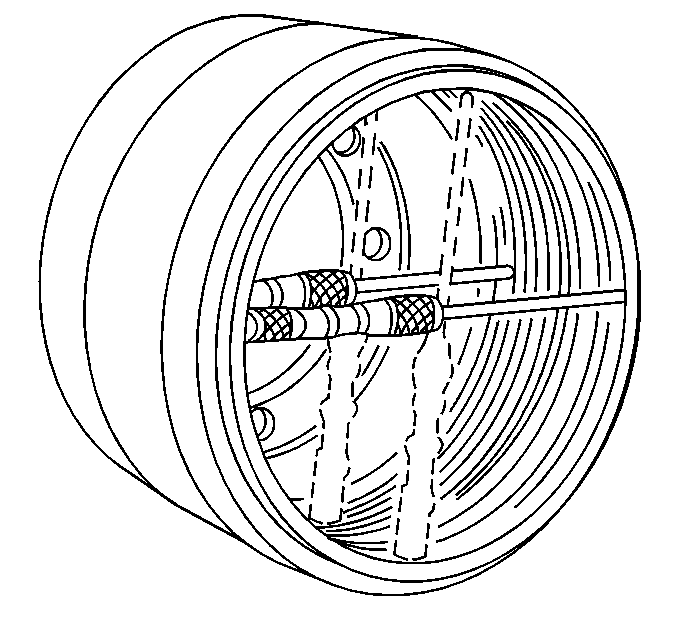Warning: Refer to Brake Dust Warning in the Preface section.
Cracked, Scored, or Grooved
A cracked brake drum is unsafe for further service. Replace a cracked brake drum. Do not attempt to weld a cracked brake drum. Smooth up any slight scores. Heavy or extensive scoring will cause excessive brake lining wear. Replace the brake drum if any of these conditions are present.
Polish the brake drum with a fine emery cloth. Do not refinish the brake drum if the following part conditions occur:
| • | The brake linings are slightly worn, but still reusable. |
| • | The brake drum is only slightly grooved. |
Do not attempt to eliminate the grooves in the brake drum or to smooth the ridges on the brake lining. This procedure requires removing too much metal and brake lining. Instead, leave the drum alone and the grooves and the ridges will match, creating satisfactory service.
Replace a grooved brake drum when you replace the brake linings. Using a grooved brake drum with new brake linings will wear the brake linings. Worn brake linings result in poor brake performance.
Out-of-Round or Tapered Brake Drum
An out-of-round or tapered brake drum can cause the following conditions:
| • | Inaccurate brake shoe adjustment |
| • | Excessive wear of other brake parts |
| • | Severe and irregular tire tread wear |
| • | A pulsating brake pedal |
Out-of-round and taper can be accurately measured with an inside micrometer and extension rods. Take these measurements at the open and closed edges of the machined surface and at right angles to each other. Replace the brake drum when the brake drum exceeds the specification limits for taper and/or out-of-round.
Inside Diameter Check
Check the following measurements for major service requirements:
- Measure the braking surface for the maximum allowable diameter at four equally-spaced points near the middle of the braking surface.
- Replace the brake drum if any diameter is equal to or greater than the maximum discard diameter stamped into the brake drum.
- Measure the braking surface for out-of-round at four equally-spaced points near the middle of the braking surface.
- Replace the brake drum if any diameter readings are more than 0.38 mm (0.015 in) apart.

An oversized brake drum causes fading or overheated brakes.
Out-of-round brake drums cause chatter at the wheels.
Taper Check
- Measure the brake drum diameters at 4 equally-spaced points near the top of the braking surface.
- Average the 4 measurements in order to obtain an average diameter near the top of the braking surface.
- Measure and average the 4 diameters at the middle of the braking surface.
- Measure and average the 4 diameters at the bottom of the braking surface.
- Compare the 4 average diameters in order to determine if the brake drum is tapered or barrel shaped.
- Replace the brake drum if any of the average diameters are more than 0.25 mm (0.010 in) apart.
The brake linings will wear unevenly if the brake drum is tapered or barrel shaped.
Leakage Test
- Block the wheels.
- Start the engine.
- Charge the air system to the air compressor governor valve cut-out point.
- Stop the engine.
- Have an assistant apply and hold the brake pedal.
- Apply a soap solution around the front and rear air brake chamber clamp and the breather holes.
- Verify that no bubbles appear.
- Apply the parking brake.
- Remove the wheel blocks.
| 7.1. | Lightly tap on the clamp and tighten the clamp bolts if bubbles appear. |
| 7.2. | Overhaul or replace the front and rear air brake chambers if the bubbles continue. Refer to the following procedures: |
